Stainless steel jewelry is a popular choice for many due to its durability and sleek appearance. However, like any material, it can have side effects on some individuals. Understanding these potential reactions can help you make informed decisions about your jewelry choices.
What are Stainless Steel Jewelry Side Effects?
Stainless steel jewelry is generally safe, but some people may experience side effects. These reactions can vary based on individual sensitivity and the specific composition of the stainless steel used.
Common Reactions to Stainless Steel Jewelry
Some individuals may experience skin reactions when wearing stainless steel jewelry. These reactions can include redness, itching, or a rash. Such symptoms are often mild but can be uncomfortable.
- Redness and itching
- Rash or bumps
- Discomfort or irritation
Factors Influencing Sensitivity to Stainless Steel
Sensitivity to stainless steel can be influenced by several factors. These include the presence of nickel in the alloy, individual skin sensitivity, and the duration of exposure to the jewelry.
- Presence of nickel in the alloy
- Individual skin sensitivity
- Duration of exposure
Nickel Allergy and Stainless Steel Jewelry
Nickel is a common component in many stainless steel alloys, and it can cause allergic reactions in some people. Understanding nickel allergy is crucial for those who experience discomfort from stainless steel jewelry.
Symptoms of Nickel Allergy
Nickel allergy symptoms can range from mild to severe. Common symptoms include itching, redness, and swelling at the site of contact. In more severe cases, blisters or dry patches may develop.
- Itching and redness
- Swelling at the contact site
- Blisters or dry patches
Prevalence of Nickel Allergy
Nickel allergy is relatively common, affecting a significant portion of the population. According to a study published in the National Center for Biotechnology Information, nickel allergy affects approximately 10-20% of the population, with a higher prevalence in women.
- Affects 10-20% of the population
- More common in women
- Can develop at any age
Skin Irritation from Stainless Steel Accessories
Skin irritation from stainless steel jewelry can occur even in individuals without a nickel allergy. Understanding the types of skin reactions and how to manage them is essential.
Types of Skin Reactions
Skin reactions to stainless steel can include contact dermatitis, which manifests as a red, itchy rash. Other reactions may include dryness or a burning sensation.
- Contact dermatitis
- Dryness or burning sensation
- Red, itchy rash
Identifying and Managing Skin Irritation
Identifying skin irritation early can help prevent more severe reactions. If you notice any discomfort, remove the jewelry immediately and clean the affected area. Applying a soothing lotion or cream can also help alleviate symptoms.
- Remove jewelry immediately
- Clean the affected area
- Apply soothing lotion or cream
Potential Health Risks of Wearing Stainless Steel Jewelry
While stainless steel is generally safe, prolonged exposure can pose potential health risks. Understanding these risks can help you make informed decisions about your jewelry.
Long-term Effects of Prolonged Exposure
Prolonged exposure to stainless steel jewelry can lead to chronic skin irritation or sensitization. In rare cases, it may contribute to the development of metal allergies.
- Chronic skin irritation
- Sensitization to metals
- Potential development of metal allergies
Safety Considerations for Different Body Parts
Different body parts may react differently to stainless steel jewelry. For example, earrings may cause more irritation than bracelets due to the sensitive nature of ear piercings.
- Earrings may cause more irritation
- Bracelets generally safer
- Consider sensitivity of body part
Alternatives to Stainless Steel Jewelry for Sensitive Skin
For those with sensitive skin, alternatives to stainless steel jewelry can help prevent reactions. Hypoallergenic options are available that minimize the risk of irritation.
Hypoallergenic Jewelry Options
Hypoallergenic jewelry is designed to minimize allergic reactions. Materials such as titanium, platinum, and surgical-grade stainless steel are often used for their low reactivity.
- Titanium
- Platinum
- Surgical-grade stainless steel
Materials Less Likely to Cause Reactions
Certain materials are less likely to cause skin reactions. These include gold, silver, and niobium, which are known for their hypoallergenic properties.
- Gold
- Silver
- Niobium
How to Choose Safe Stainless Steel Jewelry
Choosing the right stainless steel jewelry can help minimize the risk of side effects. Understanding the different grades and selecting high-quality pieces is essential.
Understanding Stainless Steel Grades
Stainless steel comes in various grades, each with different properties. Surgical-grade stainless steel is often recommended for its hypoallergenic properties.
- Surgical-grade stainless steel
- 316L stainless steel
- 304 stainless steel
Tips for Selecting High-Quality Pieces
When selecting stainless steel jewelry, look for pieces that are labeled as hypoallergenic or nickel-free. Checking for reputable brands and reading reviews can also help ensure quality.
- Look for hypoallergenic labels
- Choose reputable brands
- Read customer reviews
Can stainless steel jewelry cause allergic reactions?
Yes, stainless steel jewelry can cause allergic reactions in some individuals, particularly those with a nickel allergy. Symptoms may include itching, redness, and swelling at the site of contact.
Caring for Your Stainless Steel Jewelry
Proper care and maintenance of stainless steel jewelry can help prevent reactions and prolong its lifespan. Regular cleaning and appropriate storage are key.
Proper Cleaning and Maintenance
Cleaning stainless steel jewelry regularly can prevent buildup of dirt and oils that may cause irritation. Use a mild soap and water solution, and dry thoroughly.
- Use mild soap and water
- Dry thoroughly after cleaning
- Avoid harsh chemicals
Storage Recommendations to Prevent Reactions
Storing stainless steel jewelry properly can help prevent reactions. Keep pieces in a dry, cool place, and avoid contact with other metals to prevent tarnishing.
- Store in a dry, cool place
- Avoid contact with other metals
- Use a jewelry box or pouch
Stainless Steel Jewelry and Environmental Factors
Environmental factors can influence reactions to stainless steel jewelry. Understanding these factors can help you manage and prevent irritation.
Impact of Sweat and Moisture
Sweat and moisture can exacerbate skin reactions to stainless steel jewelry. It’s important to remove jewelry during exercise or in humid conditions.
- Remove jewelry during exercise
- Avoid wearing in humid conditions
- Clean jewelry after exposure to moisture
Effects of Chemicals and Cosmetics
Chemicals and cosmetics can interact with stainless steel jewelry, leading to irritation. Avoid applying lotions or perfumes directly on jewelry.
- Avoid direct contact with lotions
- Remove jewelry before applying perfumes
- Clean jewelry after exposure to chemicals
Is Stainless Steel Jewelry Safe to Wear?
Stainless steel jewelry is generally safe for most people. However, those with known metal allergies should exercise caution and consider alternative materials.
Stainless Steel Jewelry for Specific Body Parts
Different body parts may react differently to stainless steel jewelry. Understanding these considerations can help you choose the right pieces for your needs.
Considerations for Ear Piercings
Ear piercings are more prone to irritation due to their sensitive nature. Choosing surgical-grade stainless steel or hypoallergenic materials can help prevent reactions.
- Choose surgical-grade stainless steel
- Consider hypoallergenic materials
- Monitor for signs of irritation
Safety of Stainless Steel in Body Jewelry
Stainless steel is commonly used in body jewelry due to its durability. However, it’s important to choose high-quality pieces to minimize the risk of irritation.
- Durable and commonly used
- Choose high-quality pieces
- Monitor for signs of irritation
Comparing Stainless Steel to Other Jewelry Materials
Understanding the pros and cons of stainless steel compared to other materials can help you make informed jewelry choices.
Pros and Cons of Stainless Steel vs. Other Metals
Stainless steel is durable and affordable, but may cause reactions in sensitive individuals. Other metals like gold and platinum are hypoallergenic but more expensive.
|
Material |
Pros |
Cons |
|
Stainless Steel |
Durable, affordable |
May cause reactions |
|
Gold |
Hypoallergenic, luxurious |
Expensive |
|
Platinum |
Hypoallergenic, durable |
Very expensive |
Durability and Longevity of Stainless Steel Jewelry
Stainless steel is known for its durability and longevity. It resists tarnishing and corrosion, making it a popular choice for everyday wear. Trendy stainless bracelets are cool and shiny accessories that many people like to wear Stainless jewelry polish helps make your metal accessories shiny and clean It removes dirt and tarnish from stainless steel jewelry to keep it looking new
Steel jewelry crafters make beautiful accessories using strong metal They shape and polish steel to create unique necklaces rings and bracelets Rust-resistant jewelry components help keep your jewelry looking shiny and new These special parts don’t turn orange or brown when exposed to water or air
Stainless jewelry restoration helps make old and tarnished jewelry look shiny and new again
- Resists tarnishing
- Corrosion-resistant
- Ideal for everyday wear
Stainless Steel Jewelry Regulations and Standards
Understanding industry regulations and standards can help you choose safe stainless steel jewelry.
Industry Guidelines for Safe Jewelry Production
Jewelry production standards ensure the safety and quality of stainless steel pieces. Look for compliance with industry guidelines when purchasing.
- Compliance with industry standards
- Ensures safety and quality
- Look for reputable brands
Certifications to Look for When Purchasing
Certifications can indicate the quality and safety of stainless steel jewelry. Look for certifications such as ISO or ASTM when purchasing.
- ISO certification
- ASTM certification
- Indicates quality and safety
FAQs
What are the symptoms of a nickel allergy?
Symptoms of a nickel allergy include itching, redness, and swelling at the site of contact. In severe cases, blisters or dry patches may develop, requiring medical attention.
How can I prevent skin irritation from stainless steel jewelry?
To prevent skin irritation, choose hypoallergenic or nickel-free stainless steel jewelry. Regular cleaning and proper storage can also help minimize the risk of irritation.
How Long Does a Reaction to Stainless Steel Jewelry Last?
Reactions to stainless steel jewelry typically resolve within a few days after removing the jewelry. However, persistent symptoms may require medical attention.
Is It Possible to Develop a Stainless Steel Allergy Over Time?
While rare, it is possible to develop an allergy to stainless steel over time. Prolonged exposure can increase the risk of sensitization, especially in individuals with a history of metal allergies.
Can Stainless Steel Jewelry Turn Your Skin Green?
Stainless steel jewelry does not typically turn skin green. This reaction is more common with copper or low-quality metals.
How Can I Tell If My Jewelry Is Causing a Reaction?
Identifying a reaction to jewelry involves monitoring for symptoms such as redness, itching, or swelling. If symptoms occur, remove the jewelry and consult a healthcare professional if necessary.

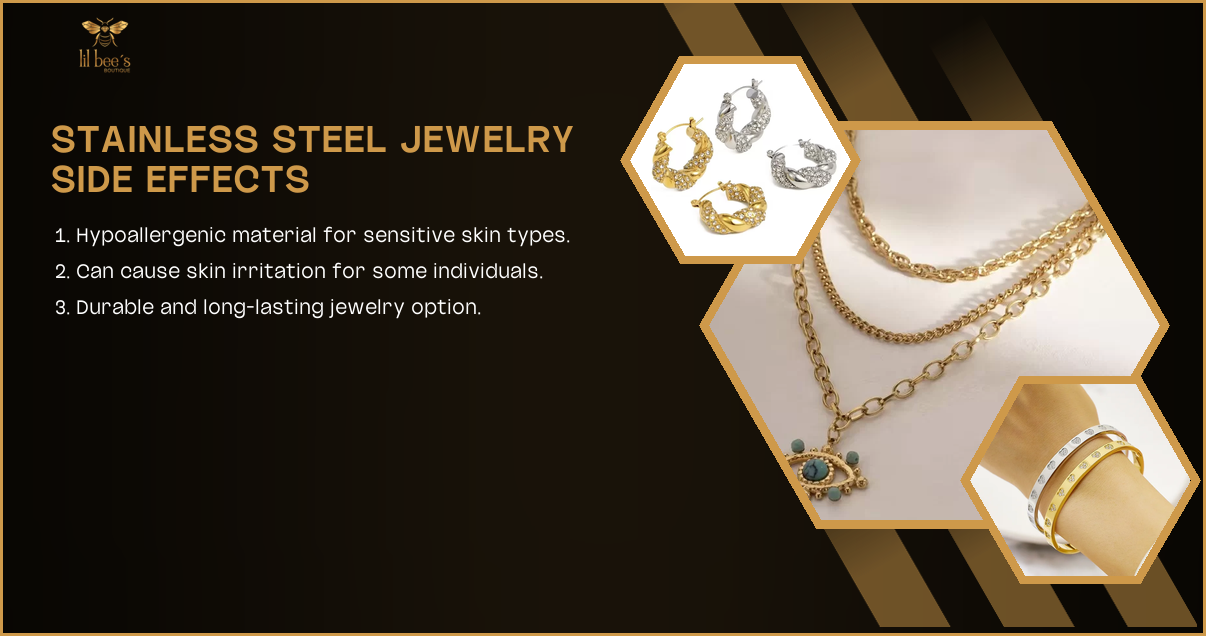

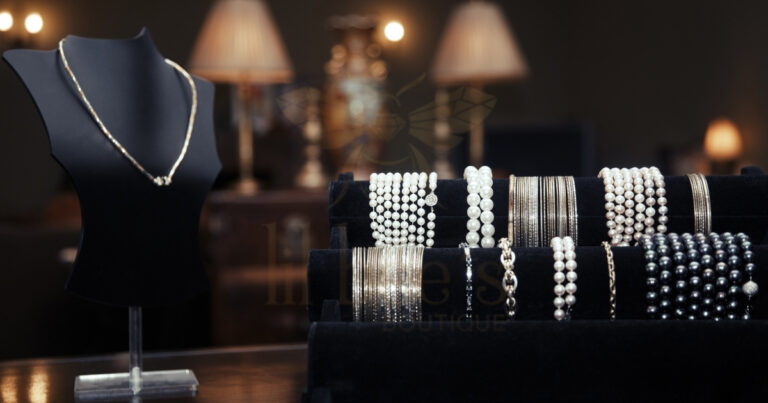
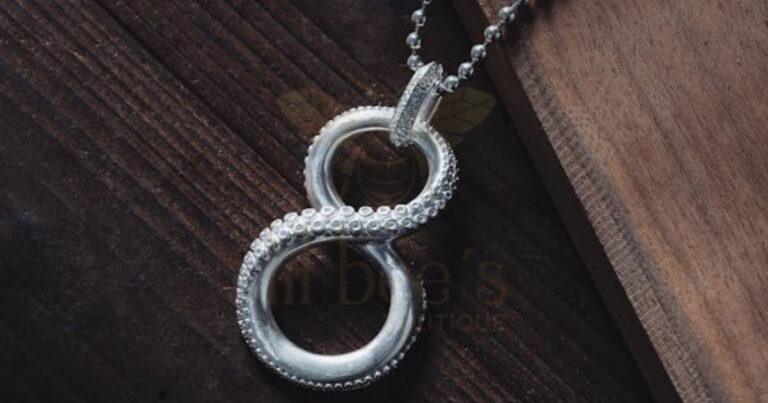
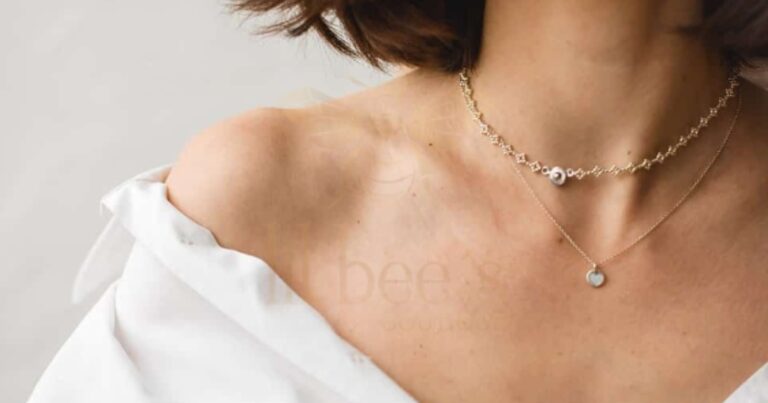
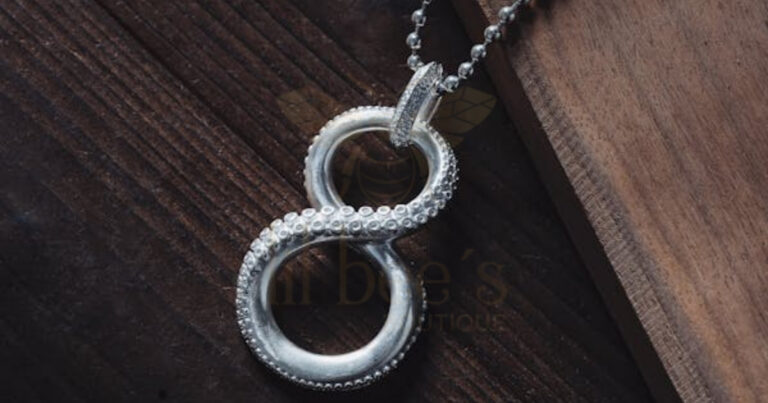
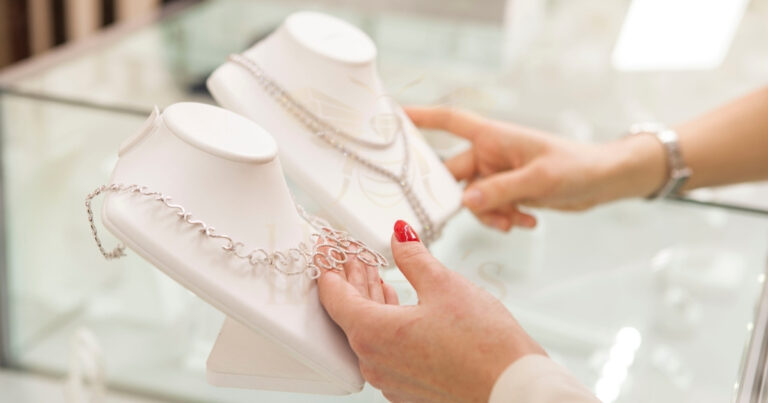
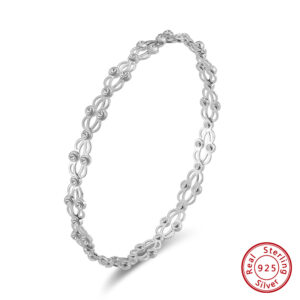 Ring-Bracelet two in one
Ring-Bracelet two in one 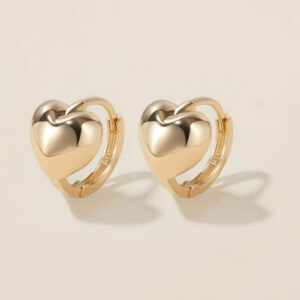 Amal earrings heart studs - Silver Jewelry
Amal earrings heart studs - Silver Jewelry 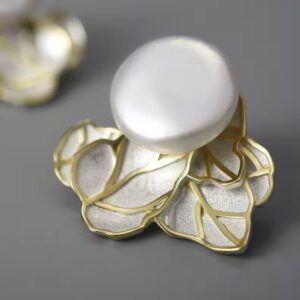 Wardah earrings - Silver Jewelry
Wardah earrings - Silver Jewelry 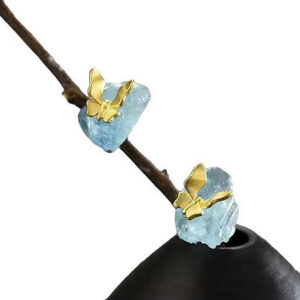 Aqua Princess Earrings - Silver Jewelry
Aqua Princess Earrings - Silver Jewelry 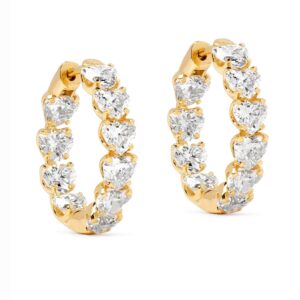 Dorri (sparkling star) earrings loops - Silver Jewelry
Dorri (sparkling star) earrings loops - Silver Jewelry 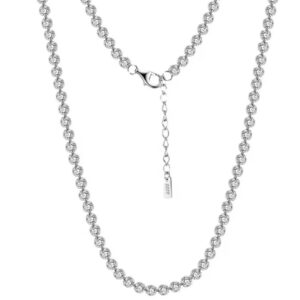 Tennis Necklace - Silver Jewelry
Tennis Necklace - Silver Jewelry 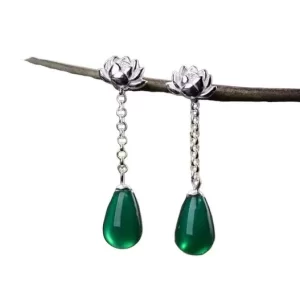 Elixir Drop Earrings - Silver Jewelry
Elixir Drop Earrings - Silver Jewelry 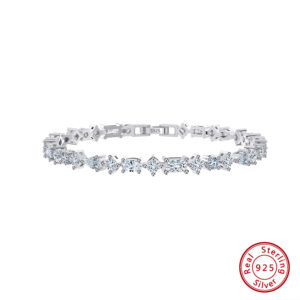 Maya Tennis Bracelet
Maya Tennis Bracelet